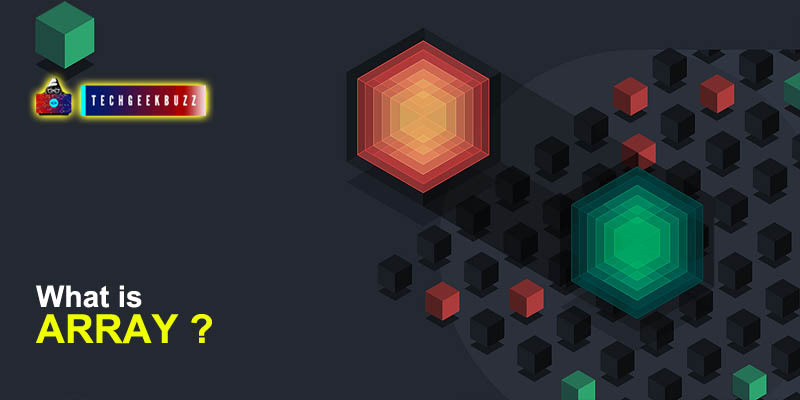In this guide, let's learn more about what are arrays .
Data structures form the foundational building blocks of programming languages, enabling developers to manipulate and organize data effectively. Among the plethora of data structures available, arrays stand out as a fundamental and versatile option. These structures, both built-in and user-defined, play a pivotal role in programming languages. In this discussion, we will focus on arrays, unraveling their significance in the world of programming.
By understanding what arrays are and how they function, we can grasp their importance as essential tools for developers across various programming languages.
Let's get started!
What is a Data Structure?
In computer science, when we deal with a large amount of data that relates somehow, the first question arises: how to manage this data or how to organize it? Here, data structures come into play. A data structure is a technique or method to organize the data so that it can be efficiently managed and stored in the memory. Basically, a data structure is a collection of data types. Some of the famous data structures are arrays, linked lists, structures, trees, etc.
What is an Array?
Arrays are the most famous data structures, if we want to define an array, we can say that an array is a data structure, which is a collection of homogeneous data elements, where data elements are data type values or variables. It is an ordered collection of similar data types that use indexing, and each element of the array is stored in the contiguous memory location.
Declaration of an array: int array[50]; # array declaration
When to use an array?
When there are lots of variables in a program and somehow, they are all related to each other and have the same data type, in this case, instead of giving each value a variable name, we would store all values inside an array. That’s how it will dissolve the problem of creating many variable names and give easy access to all the values.
For example:
int a, b,c,d,e,f,g,h; a=10; b=20; c=30; d=56; e=70; f=30; g=23; h=34;
Here in the above pseudocode, we have declared 8 variables and assigned values to them; this approach of coding could be tedious. Each developer should have knowledge of data structures and should know when to pick which data structure. The above problem could be solved with the help of an array.
For example:
int = array[10]; array[0]=10; array[1]=20; …..
Here, instead of giving different variable names to values, we store all values using one variable name array.
Array Indexing
Array uses indexing to store value; indexing in arrays starts with 0 and ends with (n-1), where n is the total number of elements that can be stored in an array. Indexing could also be used to retrieve values from an array.
Arrays Types
Arrays are of three types:
- 1-D Array.
- 2-D Array
- Multi-dimensional Array.
A 1-D Array or single-dimensional Array is a collection of linear data structures where each array element is a primitive data type that can not be divided further. For example:
int s_array[5] s_array[1,2,3,4,5]
A 2-D Array is a 1-D array where each element itself is an array. 2-D arrays can be represented as a matrix. For example:
int array_2D[3][3]; array_2D [ [1,2,3], [1,2,3], [1,2,3] ];
A Multi-Dimensional Array is used when we want more than two 2-D arrays inside a single array. For example: int arr[4][4][4];
Some Advantages and Disadvantages of Arrays
Arrays Advantages
- It is an efficient way to store homogenous data
- By far, it is the fastest data structure.
- It can store data in a contiguous memory location.
- Its index makes data retrieval very fast.
- You can store data in arrays in any dimension
Arrays Disadvantages
- We can store only fixed numbers of elements in an array
- Inserting a new element in the middle of an array is difficult and affects other elements, too.
Conclusion
Arrays are one of the most popular and basic data structures. In technical interviews and competitive programming, questions from arrays are frequent. There are many data structure that looks and works like an array, but a programmer should have a good instinct when and where to use arrays.
Happy coding!
People are also reading:
